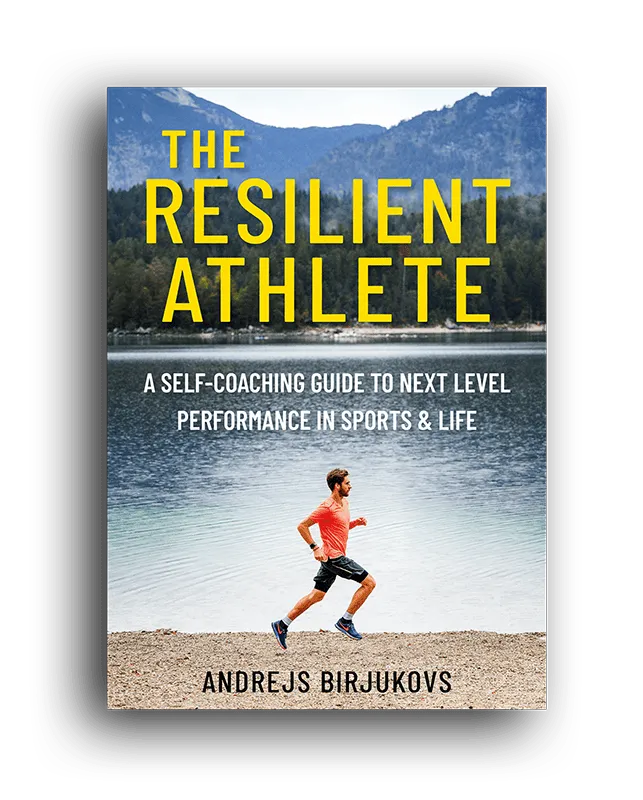Have you ever finished what felt like a good and strong session, only to discover over the next few days that your ankle hurts after running… Not a sharp stab, just a stubborn, nagging pain that refuses to go away.
Maybe you tried pushing through, taking a few days off, foam rolling, icing. Possibly even googling ‘how to treat an ankle injury’ and trying out a few suggestions. But nothing really fixes it — and now the whole training plan is under question.
In my 20+ years of experience as an elite athlete and a coach I’ve had a lot of contact with injuries. Over the years I developed a process for navigating and preventing these, which I share in detail in my book The Resilient Athlete. In this post I’ll share the most important things you can do to address nagging discomfort before it turns into an injury and build long-term resilience.
Ultra running and Achilles injuries
My dear friend Hans is an ultra trail runner (focusing on 70k-100k races) and has developed an Achilles issue over the off-season. I’ve coached him for a few years now and I typically help him organize annual training for all his crazy mountain adventures. Most recently, Transalpine (a 7-day stage race across the Alps covering 243km) and the 70k mountain trail in Salzburg, Austria. I ran the 40k version myself that year to cheer him on and take part in the action.
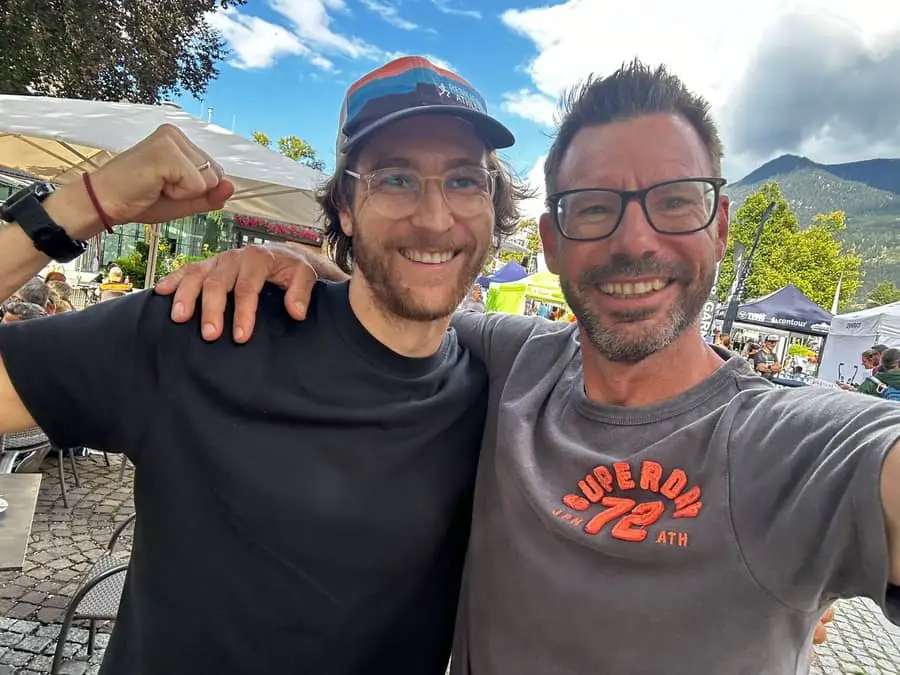

So, at the beginning of this season we met again and Hans told me his ankle hurts after running and even throughout the day. Logically, this doesn’t let him enjoy the mountains. Too painful to run, ski or do anything active outdoors, really. Quite demotivating.
So, he developed a relationship with Zwift over the winter instead and have put in impressive hours and power on the indoor trainer. Not bad for aerobic fitness, but definitely not ideal for the season start, considering that a 100k is on the horizon…
Read also: 5 Core Exercises For Runners To Get Fast & Stay Injury-Free
Why do I get sore ankles after running?
First of all, some context. The ankle joint is one of the primary shock absorbers during running. It helps to transfer the impact from the feet across the entire lower body – quads, hamstrings, calves, hips, glutes. Kind of like a suspension in a car.
Overuse injuries usually develop when there’s strength imbalance in the body. For example, strong quads but underdeveloped calves or hamstrings. In this case the shock is not dispersed equally and can accumulate in a single place. For many runners (Hans included) it’s the aching ankle after running, often triggering Achilles tendinitis. That happens due to calves not being strong enough to absorb the load.
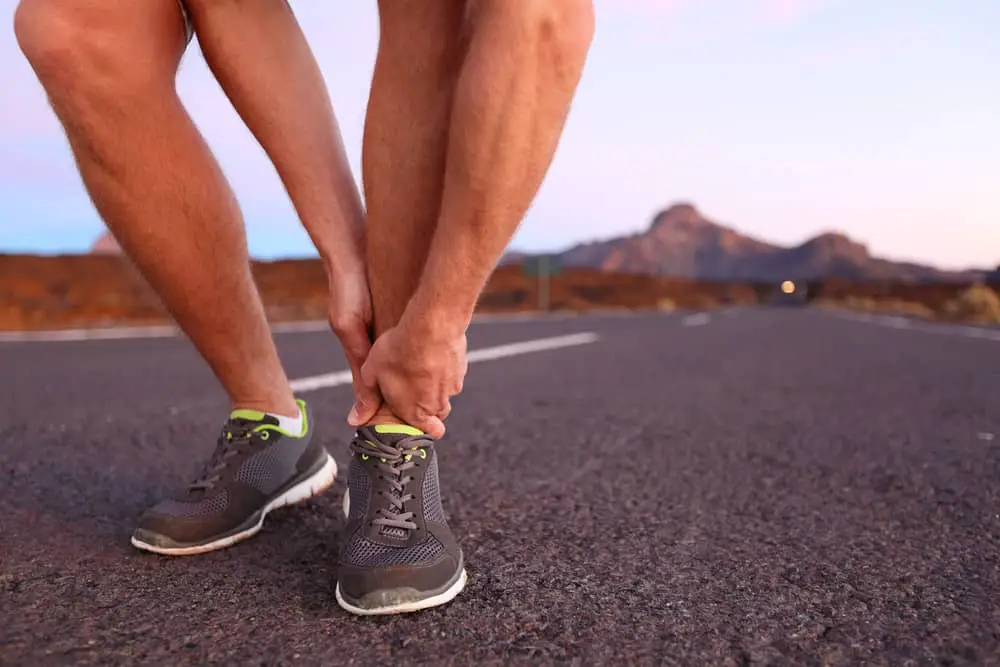
Sometimes you need to play the cards you’re dealt. An injury is not the end of the world. It always leaves clues. And in most cases – clues to what is the weakest link and what needs to be strengthened. After all, ankle hurts after running means that all the load (including that from daily activities) accumulates there. So, the area needs strength.
Yes, strength is the answer to injuries, not rest. Overuse injuries usually happen because there’s more load than the tendon/muscle is capable of handling. So, once acute inflammation & pain subsided (only nagging pain is left), it’s time to work. To build the strength in the surrounding tissue to be able to handle the load better. Not wait another 3 months to ‘let it heal’..
Pain is a signal, not just a problem — it leaves clues
That’s exactly what we’re starting the 2025 season with – to fix the ‘ankle hurts after running’ problem. That means Releasing & strengthening the calves and tibia, opening and stabilizing the hips, doing some walks with a few minutes of jogging – the foundation.
And it starts to work.
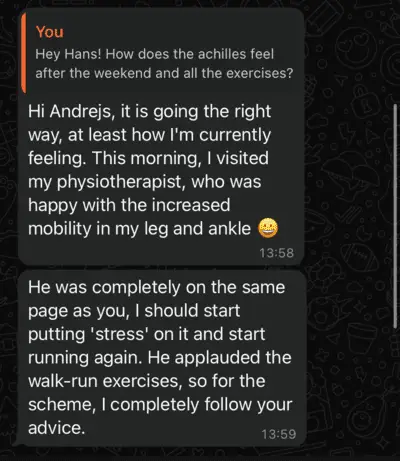
3 Things Most Athletes Get Wrong About Injury Recovery
Many years ago one incident completely changed my approach to injuries.
I sprained my shoulder badly in a ski accident. Doctor ordered me to rest for 6 months, but I still felt shooting pain when lifting arms overhead or changing directions rapidly after 9 months. Same doctors said an arthroscopy surgery is the only way to ‘see what’s the problem’…
I did what any reasonable person with shoulder pain would do…
I went on a week-long surf camp to Sri Lanka. And while my shoulder hurt every time a wave would knock me off, I noticed that after hours of paddling on a surfboard my shoulder actually felt much better and towards the end of the week there was almost no pain.
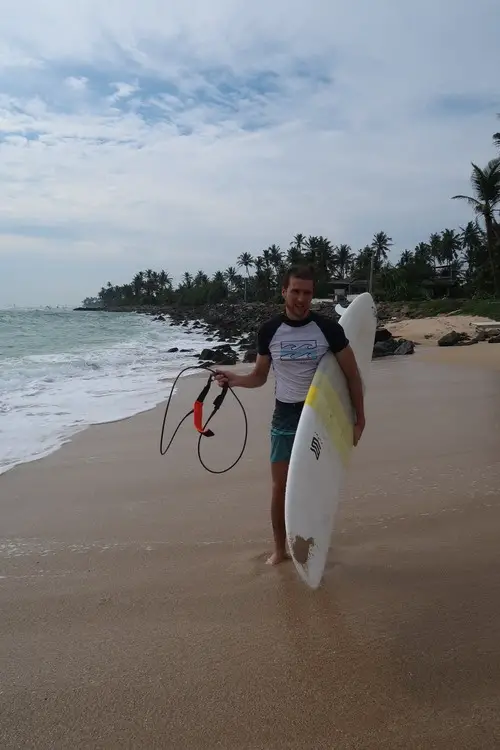

1 week of training to end 9 months of pain. A miracle..
Turns out, paddling on a surfboard strengthens rotator cuff muscles around the shoulder, which puts it ‘in the right place’. Since then, my approach to pain was always to mobilize and strengthen stabilizers around. And I tell you, it works like magic.
“It will heal by itself”
Rest isn’t always the solution — especially not long-term rest. When we don’t move the injured area, we lose surrounding muscle tissue, which makes the body weaker and extends the recovery process.
Movement is critical. It increases the blood flow to the affected area, which helps the body to deliver oxygen and nutrients, as well as clear up the waste products.
But it should be gentle movement. Only to the point of discomfort – not pain. Start with slow mobility exercises and low-impact movement (e.g. walking, indoor cycling, pool running). That’s what we did with Hans – started mobilizing all areas and only when he was confident, we moved into 20-30 minutes of run/walking every other day.
“I’m not training, so I don’t need to eat as much”
In order to recover from the training load, the body needs building blocks (protein) AND energy (calories). In case muscles don’t recover, they will not be able to withstand load placed on them and injuries can develop. Or existing discomforts can turn into chronic pain.
Many runners make the mistake of not eating enough, fearing they will gain too much weight. Often that is also the cause of the problem in the first place. Most overuse injuries start from a place of deficit (energy, nutrients, etc.) and the risk of muscle breakdown increases when the body is underfueled.
A typical desk worker’s protein requirements are around 0.5-0.7g per kg of bodyweight. Athletes who actively train need around 1.2-1.5g per kg of bodyweight of protein per day and people who recover from surgeries may need up to 2g. For a 70kg runner 1.2-1.5g/kg translates to 84g – 105g of protein per day. If a person is not strategic about his or her nutrition, it’s quite hard to consume this much. A protein shake provides only 20-30g of protein, which in this calculation is barely a quarter.
But it’s not enough to just give the bod protein. The body needs enough fuel to have the energy to recover and rebuild. Enough calories and a balanced diet should come first to provide the body with enough fuel. A good place is to estimate your total daily energy expenditure (TDEE) via a calculator and adjust as you go. Many athletes find that they are often 200-300 calories below what they need per day.
Read also: Top 10 Endurance Athlete Diet Mistakes And How To Avoid Them
“I can focus on other things while the injury heals”
Injury can be a signal that the body has been overworking for some time. To heal it needs rest & recovery. Now is not the time to stay up late and sacrifice sleep.
Injury requires just as much focus (if not more) as active training. To help body catch up on training load and absorb it, allow it to fully relax. Sleep 8-9 hours, hydrate well and double down on healthy habits.
Tissue repair and adaptation only happen during sleep. That’s when the body is at peace and can turn its attention and resources on regeneration.
You can optimize your stress level and improve recovery by tracking your heart rate variability (HRV). It is the balance between the sympathetic (fight or flight) and parasympathetic (rest & digest) nervous systems. A lower HRV would mean the balance is shifted more to the former and the body can use more recovery.
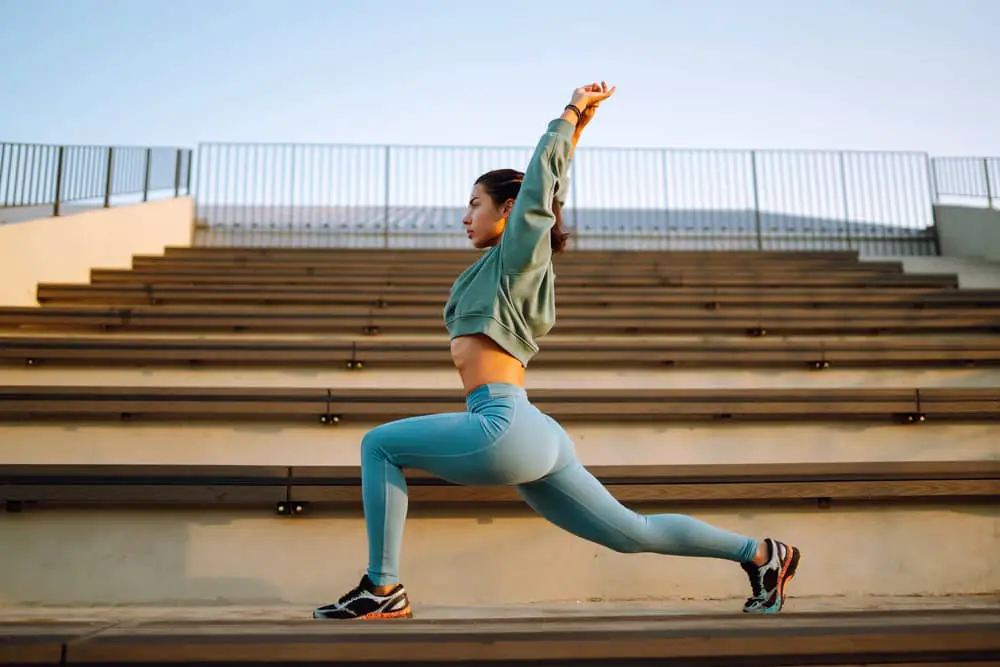
The 3-Step Process to Return From Injury
Fixing the ‘ankle hurts after running’ problem is not a game of guessing and hoping. There is a specific process that helps to recover and gradually return back from injuries. I’ve outlined the core elements below:
Step 1: let acute pain heal
First, the obvious. When the body is in acute pain it needs to rest – no way around it.
After taking a break (typically a week or two) the pain may diminish fully or subside considerably – that’s your cue to begin work. If the pain is no higher than 3 on a scale from 1 to 10, start moving and cross-training to avoid losing aerobic fitness. Just make sure you don’t trigger pain.
Your aerobic engine is not affected, so use it. It’s one less thing you’ll need to rebuild once you’re over the hump. Multisport is a great tool in your arsenal and this is the time to try out different ways to stay active that don’t trigger pain.
In addition to movement, start incorporating light mobility work, gentle stretching and self-massage.
Step 2: restore mobility and build strength
This is the key phase. By this point you should be comfortable with where the pain is and what triggers it. Do your research to understand the muscles involved and start releasing tight muscles and strengthening the opposing ones.
For cases when ankle hurts after running, focus on ankle mobility (in all directions) and calf strength. Introduce calf raises and negative calf raises to the point of discomfort (not pain).
Expand your focus on all areas of lower body – hips, calves, tibia, ankle, feet. Introduce stability and strength exercises also for your posterior chain to improve posture. Think of it as “bulletproofing” your weak link.
Step 3: reintroduce running gradually
If you’ve been consistent with small mobility and stability exercises, the body will gradually build strength in what used to be weak area. To an extent that it will be ready to take on some load without pain.
When that’s the case, start power walking and introduce run breaks at an even intervals. Something like 2 min run followed by a 5 min walk for a total of 30min. And then gradually increase the time running from there.
The body will need some time (read a few weeks) to rebuild resilience in the tissue and adapt to the new load. It’s a good idea to stick to soft surfaces (i.e. grass and trail or even treadmill) to soften the load at first.
Needless to say that this is not the time for speedwork. Instead, listen to the body and work with it – at the pace that is comfortable. Try to minimize how much ankle hurts after running. The more painless miles you put in, the more resilient you will become.
Multisport and cross-training will still play the key role at this point to keep the fitness up. That is ultimately a good thing and the habit of cross-training makes you a more well-rounded and resilient athlete.
Bonus Step 4: include your rehab activities into your warmup
It might take a few months for the pain to fully diminish. But when it will, remember that you had this injury for a reason. The body shown what is the weakest link, so from now on it’s important to protect it. As they say,
There are two types of athletes. Those who were injured and those will get injured.
Athletes who were injured will do everything to avoid being sidelined again. That includes consistently working on the weaknesses.
To ensure the injury doesn’t reappear, all the exercises you’ve done to build strength you can (and should) use during your warmup to ‘activate’ the right patterns. This will help to spread the load evenly during training.
Become your own detective
So, where did it leave us with Hans? Over a period of ~3 months he has improved his mobility and built quite a bit of strength to tolerate 2-3 hour runs again. He still had sore ankles after running big sessions after a few months. Then, during one of our talks I’ve discovered his protein intake was at least half of what he should take with his workload. This season was not about chasing PBs, but rather incorporating important lifestyle habits to support all the training load he’s going through. And building himself from the ground up.
Pain does not mean failure. It’s body’s feedback system. And resilience is the body’s capacity to adapt under stress. This is the opportunity to build yourself from the ground up – stronger than ever before.
One statistic I’m pretty proud of is that so far none of my athletes have skipped a race or fell out of training due to an injury. Even if pain comes just weeks before a big event. We’ve always managed to get ahead of it (and not suffer through it).
If you’re struggling with pain that got chronic (i.e. stays there even after weeks and months of rest), don’t just wait for it to pass. Instead, work to understand the reason and strengthen yourself.
In my book The Resilient Athlete I call this ‘become your own detective’ and there’s a whole chapter on what to do when an injury is looming. Pick up a copy and let me know how you like it.



